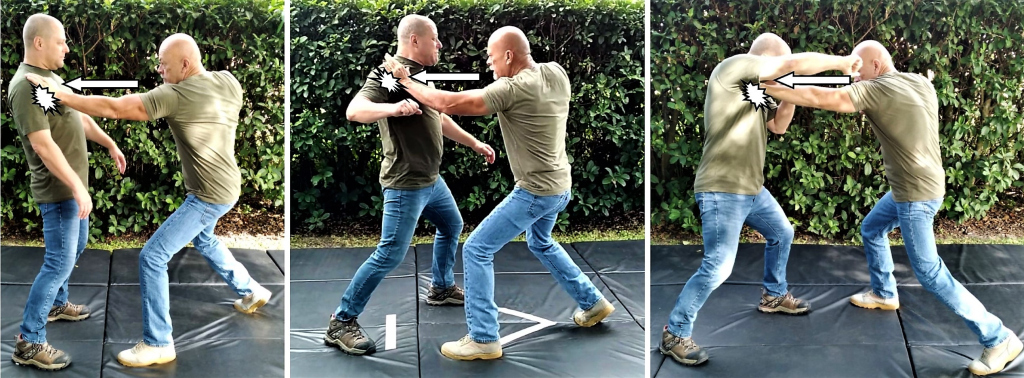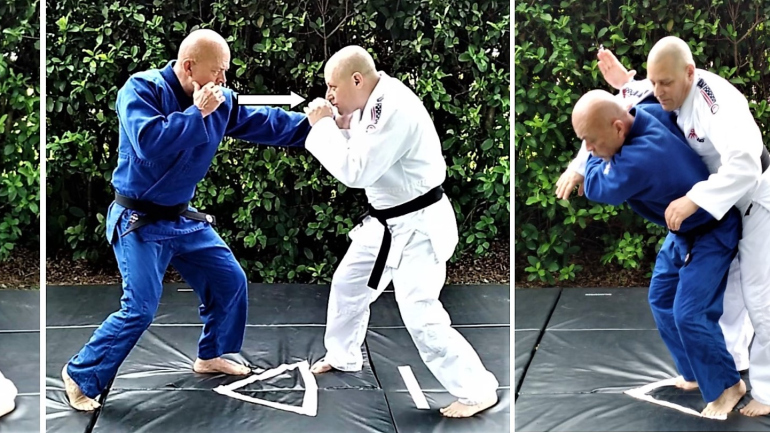“THE STOP” can be found in the US Army combatives Field Manuals 21-150 from 1954 through to 1971. It can also be found in earlier works such as Willaim Jacomb’s 1918 book on Practical self defense where it is referred to as “THE STOP”. It is also used in the 1905 book, The Complete Kano Jiujitsu/Judo. Simple, gross motor driven direct and effective, it takes our natural survival instincts into consideration and allows those survival instincts to work as a foundation for a very rapidly delivered technique. Turning this instinctive reaction into a hit, thrown much like a straight punch in boxing as opposed to a push, you can stop the rotation of the attacker’s torso at his shoulder. This tactic is incorporated into my boxing skills and combinations. It can be utilized as a preemptive strike or when the attack is recognized early or late.
Preemptively, “THE STOP” is used just before the adversary is within striking distance and when your intention is to take him to the ground. When delivered it stops the forward motion of the attacker and brings his arms up toward the front(1st picture below).

When it is used to intercept a punch early, striking the pocket of the shoulder stops the rotation of the adversary’s torso at his shoulder (2nd picture above). “THE STOP” is also effective when you pick up on the attacker throwing a punch late. For example, if the attacker throws a right haymaker, step off line of the punch and at an angle to your right and deliver the strike with your left hand to the attacker’s right shoulder (3rd picture above). This tactic basically short-circuits the power of your attacker’s punch at the root of its motion.
“THE STOP” is not a push, it is a strike, delivered much like a straight punch in boxing either with the lead hand like a jab or the rear hand. Targets the area where the shoulder meets the chest and immediately follow up by grabbing the adversary’s shirt at the area struck. Once the adversary has been rocked backwards, immediately follow – up with a pull bringing up off his heels and toward you for more strikes or a throw or take down.
Shoulder Throw vs Rear Hand Punch 1.) From a ready position, you see the aggressor start to throw a rear hand punch. Push off the left foot and step forward with your right foot at a slight angle along the right side of the triangle slipping to the inside of the aggressor’s punch. Simultaneously strike the aggressor’s shoulder right above the armpit jamming his attempted punch. Immediately grip his shirt at the area struck.
1.) From a ready position, you see the aggressor start to throw a rear hand punch. Push off the left foot and step forward with your right foot at a slight angle along the right side of the triangle slipping to the inside of the aggressor’s punch. Simultaneously strike the aggressor’s shoulder right above the armpit jamming his attempted punch. Immediately grip his shirt at the area struck.
2.) Pull the aggressor toward you with the left hand rocking him forward up off his heels. At the same time that you start your pull with the left hand, your left foot moves up toward the top of the triangle.
3.) Then Immediately step your right foot to his right foot. The toes of your right foot should be almost touching the inside of his right foot, next to his big toe. Your right arm moves under the aggressor’s right armpit. 4.) Pivot counter clockwise on the ball of your right foot and continue to pull with the left hand. Your left foot steps back all the way through the triangle between the opponent’s feet. The toes of both feet should be pointing in the direction of the apex of the triangle. Pinch the opponent’s right arm at his arm pit between your right forearm and bicep. Rotate the palm of the right hand toward your head (this creates a tighter clamp on the opponent’s arm).
4.) Pivot counter clockwise on the ball of your right foot and continue to pull with the left hand. Your left foot steps back all the way through the triangle between the opponent’s feet. The toes of both feet should be pointing in the direction of the apex of the triangle. Pinch the opponent’s right arm at his arm pit between your right forearm and bicep. Rotate the palm of the right hand toward your head (this creates a tighter clamp on the opponent’s arm).
5.) Pull downward with your right hand as you straighten your legs quickly by driving upward off your heels, popping your hips upward into the opponent.
6.) To finish the throw, continue to pull and twist your torso by turning your right elbow toward your left knee and drive the opponent to the ground.



